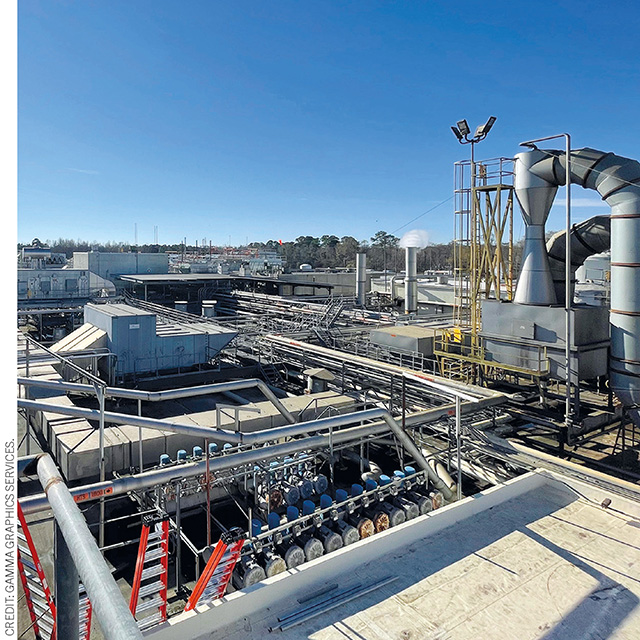Compliance for industrial refrigeration system owners is generally defined for all industries that process highly hazardous chemicals by the Occupational Safety and Health Administration (OSHA) Process Safety Management (PSM) standard and the Environmental Protection Agency (EPA) Risk Management Plan (RMP) Rule.
The majority of food and beverage manufacturing plants, and the distribution centers in their supply chain, use the highly hazardous chemical anhydrous ammonia in their industrial refrigeration systems. The system owner is responsible for complying with all governing regulations and ensuring all measures are taken to mitigate the risk of release to its employees and the general public.
The International Institute of Ammonia Refrigeration (IIAR) develops standards to advise the food and beverage and cold storage industries on the management of these systems to support safety and compliance with OSHA and EPA. On April 16, 2019, the American National Standards Institute (ANSI) approved ANSI/IIAR 6-2019, Standard for Inspection, Testing, and Maintenance of Closed-Circuit Ammonia Refrigeration Systems (IIAR 6). The publication of this standard further defines compliance qualifications for the use of anhydrous ammonia as an industrial refrigerant.
The standard captures previously employed IIAR Bulletins, normative and informative information, timetables, and guidelines for recordkeeping. Tony Lundell, senior director of standards and safety at IIAR, clarifies, saying, “IIAR 6 is intended to be part of a mechanical integrity program, as the minimum requirements for inspection, testing, and maintenance, or ITM.”
A significant development in IIAR6 is the need to regularly test piping, vessels, and system components in addition to the traditional practice of visual inspection. For decades, many companies have relied solely on an annual visual inspection of their refrigeration system. While generally effective, this visual inspection is not reliable in all scenarios; 46% of ammonia releases in food and beverage and cold storage facilities occur as a result of equipment failure. Testing, an effective early detection practice that will reveal system degradation and defects that visual inspection cannot detect, helps mitigate this problem.
The Burden on the System Owner
OSHA’s Standard 1910.119, Process safety management of highly hazardous chemicals, section (j)(4) states:
- Inspections and tests shall be performed on process equipment.
- Inspection and testing procedures shall follow recognized and generally accepted good engineering practices.
- The frequency of inspections and tests of process equipment shall be consistent with applicable manufacturers’ recommendations and good engineering practices, and more frequently if determined to be necessary by prior operating experience.
ANSI/IIAR Standard 6-2019 states testing should be performed:
- When the state of a component cannot be determined by visual inspection.
- At minimal timeframe intervals independent of visual inspection.
These documents serve as a foundation, as both define only the mimimum requirements for refrigeration system owners and reasonably don’t accept responsibility for system failure if only the minimum requirements are met. The system owner bears the burden of:
- The responsibility for preventing or minimizing the consequences of catastrophic release.
- Establishing, documenting, and executing processes and procedures related to testing, frequency, acceptable operating threshholds, further action, and more.
Knowing where to test, how often, and what to look for are common challenges system owners must address. Practice, education, peer best practices, and years of analysis help provide some answers.
Testing
Testing should be performed on all components and equipment in the refrigeration system. Instructions and frequency for testing are straightforward for equipment such as compressors, condensers, evaporators, and alarms. This is, in part, due to the manufacturer manuals that accompany these parts. However, components such as piping, vessels, and valves are mercurial and must be evaluated with non-destructive testing (NDT) to determine their operable state.
NDT involves the use of technology to examine an object or material’s structure, imperfections, composition, or properties without destroying or compromising the object or material’s future use. NDT provides information about the state of material that one cannot capture visually or that would otherwise require a great deal of manual effort.
ACCESS THE FULL VERSION OF THIS ARTICLE
To view this article and gain unlimited access to premium content on the FQ&S website, register for your FREE account. Build your profile and create a personalized experience today! Sign up is easy!
GET STARTED
Already have an account? LOGIN

